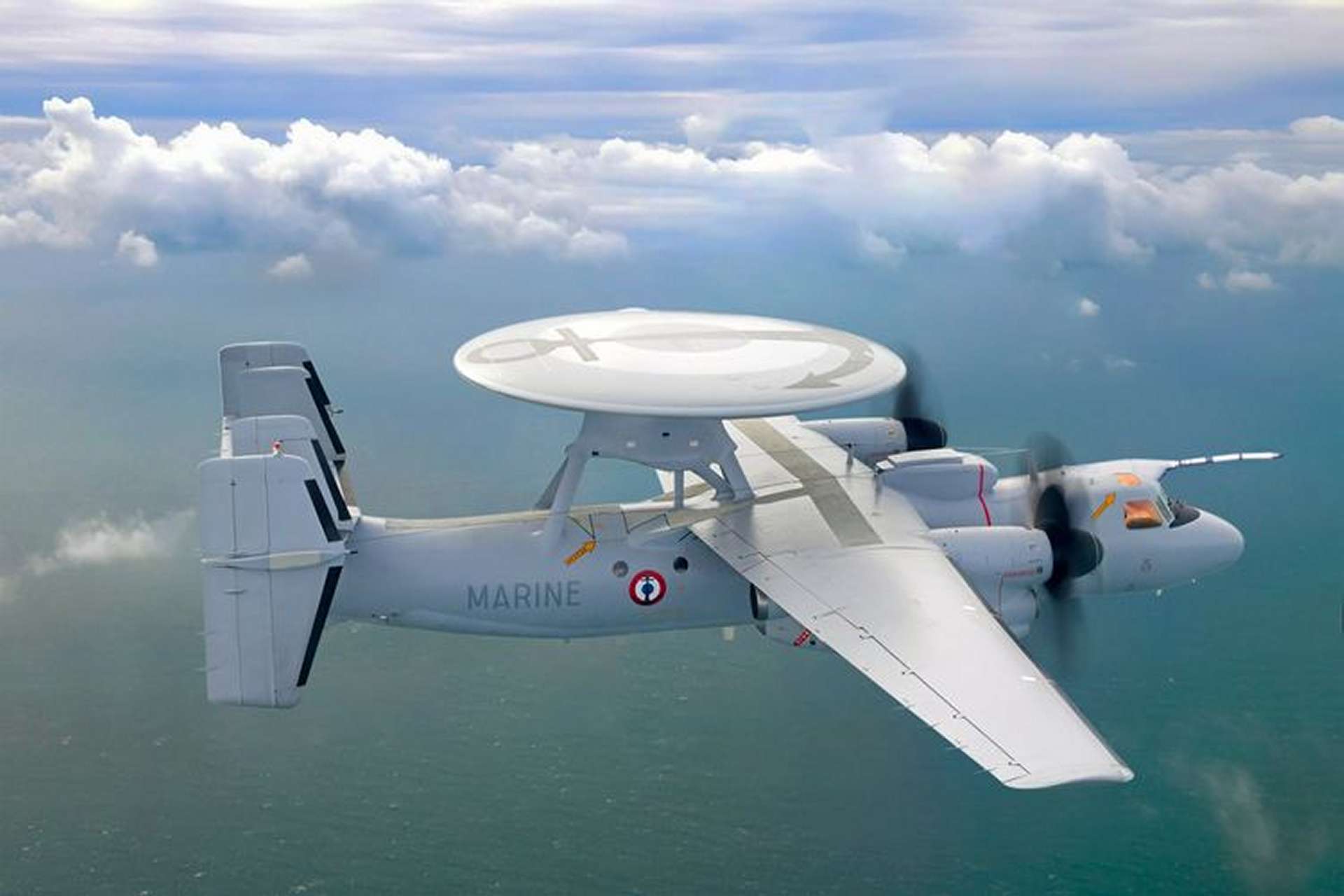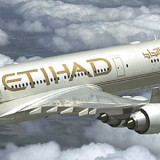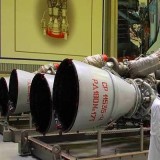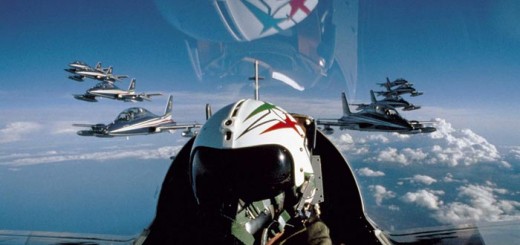US Northrop Grumman Begins Production of E-2D Hawkeye to Elevate France’s Naval Airborne Command Capabilities

{loadposition bannertop}
{loadposition sidebarpub}
On December 10, 2024, Northrop Grumman officially began manufacturing the first E-2D Advanced Hawkeye airborne early warning aircraft destined for the French Navy. During a ceremony at the St. Augustine production site, representatives from the French Navy, Northrop Grumman, the Naval Air Systems Command (NAVAIR), and the Navy International Programs Office (NIPO) celebrated this key milestone in Franco-American defense cooperation.
Follow Army Recognition on Google News at this link
France, which already operates the E-2C Hawkeye 2000 for carrier-based airborne surveillance and airspace management, has ordered three E-2D Advanced Hawkeye aircraft. (Picture source: Northrop Grumman)
France, which already operates the E-2C Hawkeye 2000 for carrier-based airborne surveillance and airspace management, has ordered three E-2D Advanced Hawkeye aircraft. The first delivery is scheduled for 2027. This acquisition will enable the French Navy to maintain an ultra-modern airborne early warning capability aligned with the latest U.S. technological standards.
The E-2D Advanced Hawkeye represents a major technological advance compared to the E-2C Hawkeye 2000. In addition to improved sensors, communications, and data link systems, the E-2D version supports aerial refueling. This feature significantly increases operational endurance and offers enhanced flexibility, thereby strengthening the Charles de Gaulle carrier strike group’s ability to maintain informational and decision-making superiority in a wide range of operational scenarios.
The French Navy is the only non-U.S. operator to deploy Hawkeyes from an aircraft carrier, illustrating the long-standing cooperation and interoperability between the French and U.S. navies. Transitioning to the E-2D will further solidify this relationship, ensuring both forces can seamlessly collaborate during joint exercises, coalition operations, and shared strategic missions.
According to Janice Zilch, Vice President of Multi-Domain Command and Control Programs at Northrop Grumman, “Our partnership with France goes back more than 25 years. We have supported the French Navy throughout the Hawkeye 2000 era, and we look forward to providing the next generation of capabilities with the E-2D Advanced Hawkeye.”
Spanning over sixty years of history, the E-2 family has fulfilled airborne early warning and control functions for several nations worldwide. Equipped with a cutting-edge radar and advanced combat management systems, the E-2D Advanced Hawkeye is considered the global benchmark for carrier-based airborne early warning aircraft. With an active production line and a track record of on-time deliveries, the E-2D ensures operators stay ahead of rapidly evolving threats.
By adopting the E-2D Advanced Hawkeye, the French Navy reaffirms its commitment to remaining at the forefront of maritime operations, leveraging state-of-the-art technologies and long-standing partnerships to safeguard its national interests and effectively contribute to international security.

{loadposition bannertop}
{loadposition sidebarpub}
On December 10, 2024, Northrop Grumman officially began manufacturing the first E-2D Advanced Hawkeye airborne early warning aircraft destined for the French Navy. During a ceremony at the St. Augustine production site, representatives from the French Navy, Northrop Grumman, the Naval Air Systems Command (NAVAIR), and the Navy International Programs Office (NIPO) celebrated this key milestone in Franco-American defense cooperation.
France, which already operates the E-2C Hawkeye 2000 for carrier-based airborne surveillance and airspace management, has ordered three E-2D Advanced Hawkeye aircraft. (Picture source: Northrop Grumman)
France, which already operates the E-2C Hawkeye 2000 for carrier-based airborne surveillance and airspace management, has ordered three E-2D Advanced Hawkeye aircraft. The first delivery is scheduled for 2027. This acquisition will enable the French Navy to maintain an ultra-modern airborne early warning capability aligned with the latest U.S. technological standards.
The E-2D Advanced Hawkeye represents a major technological advance compared to the E-2C Hawkeye 2000. In addition to improved sensors, communications, and data link systems, the E-2D version supports aerial refueling. This feature significantly increases operational endurance and offers enhanced flexibility, thereby strengthening the Charles de Gaulle carrier strike group’s ability to maintain informational and decision-making superiority in a wide range of operational scenarios.
The French Navy is the only non-U.S. operator to deploy Hawkeyes from an aircraft carrier, illustrating the long-standing cooperation and interoperability between the French and U.S. navies. Transitioning to the E-2D will further solidify this relationship, ensuring both forces can seamlessly collaborate during joint exercises, coalition operations, and shared strategic missions.
According to Janice Zilch, Vice President of Multi-Domain Command and Control Programs at Northrop Grumman, “Our partnership with France goes back more than 25 years. We have supported the French Navy throughout the Hawkeye 2000 era, and we look forward to providing the next generation of capabilities with the E-2D Advanced Hawkeye.”
Spanning over sixty years of history, the E-2 family has fulfilled airborne early warning and control functions for several nations worldwide. Equipped with a cutting-edge radar and advanced combat management systems, the E-2D Advanced Hawkeye is considered the global benchmark for carrier-based airborne early warning aircraft. With an active production line and a track record of on-time deliveries, the E-2D ensures operators stay ahead of rapidly evolving threats.
By adopting the E-2D Advanced Hawkeye, the French Navy reaffirms its commitment to remaining at the forefront of maritime operations, leveraging state-of-the-art technologies and long-standing partnerships to safeguard its national interests and effectively contribute to international security.






